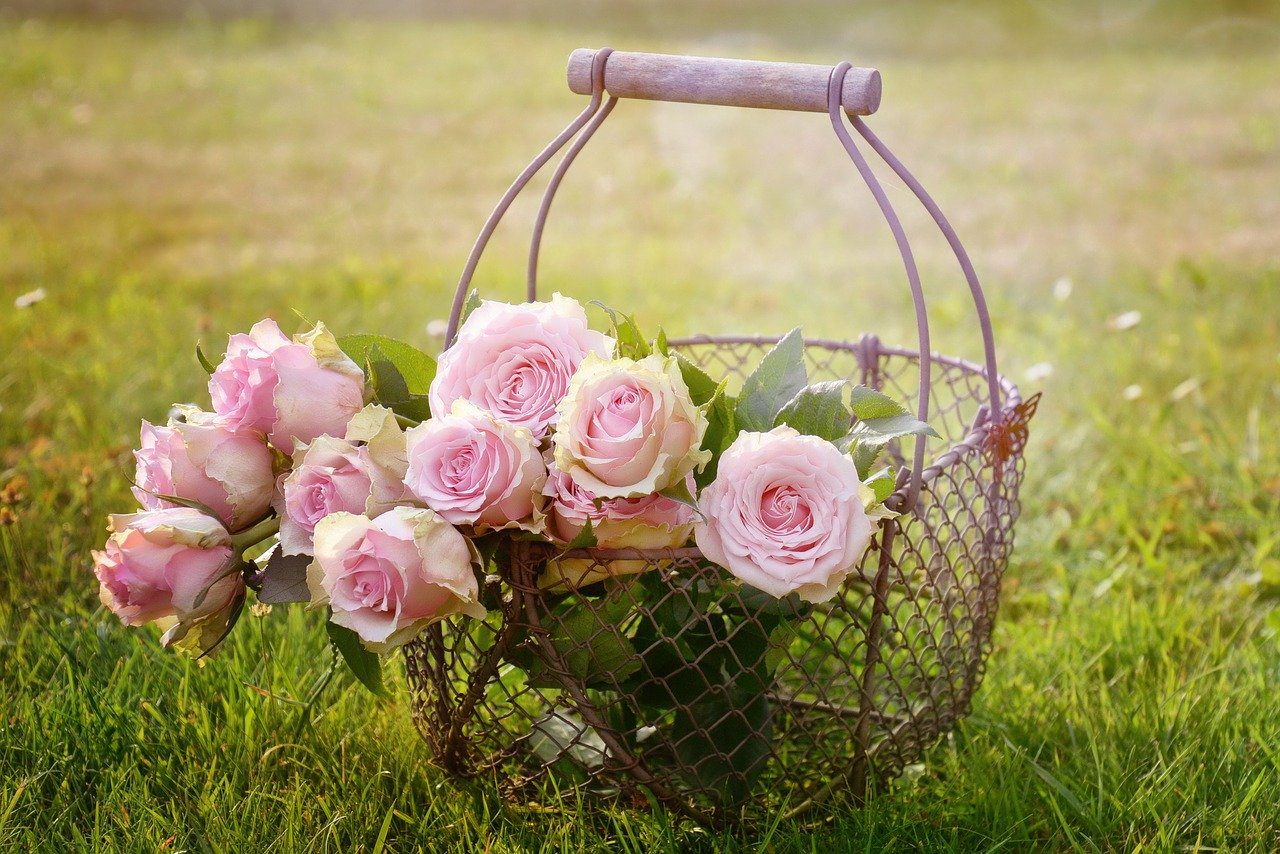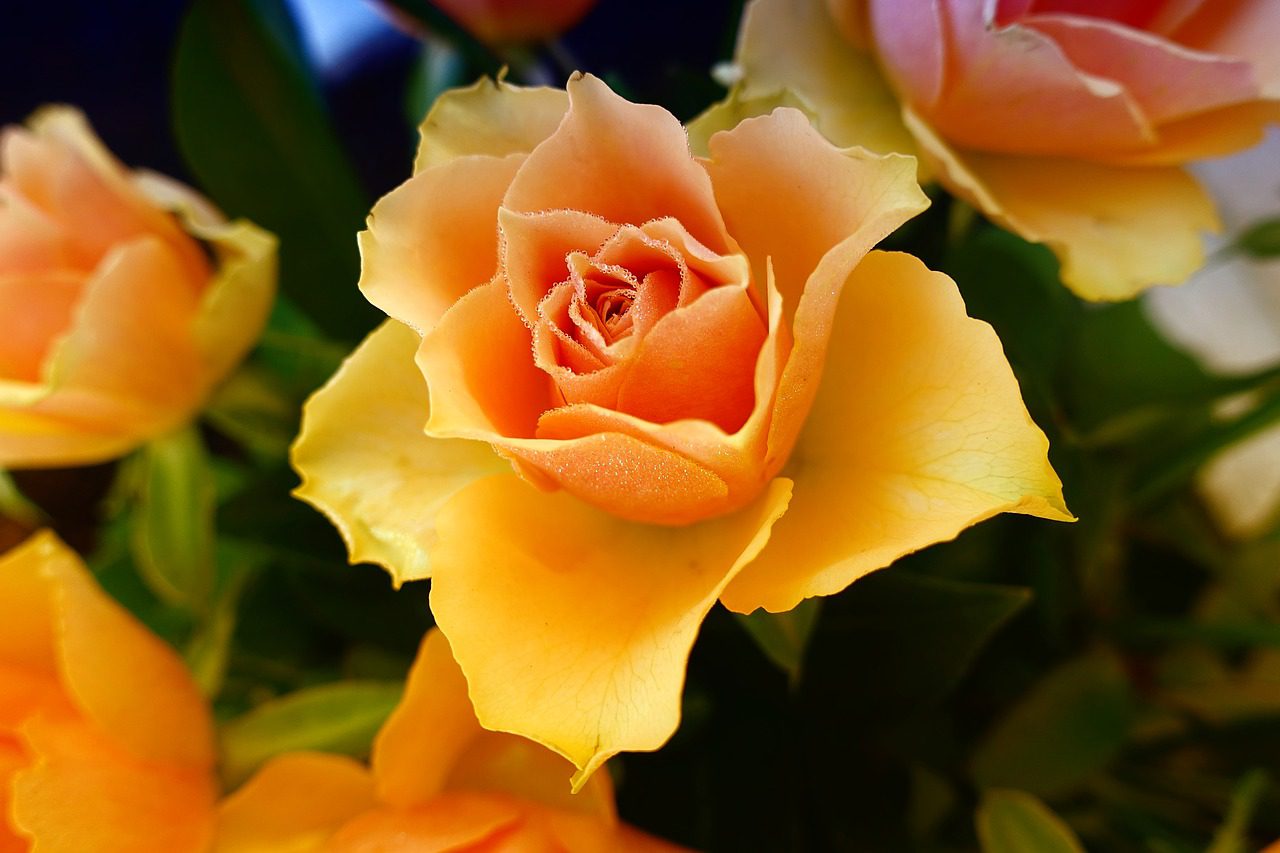Roses and springtime go together like peanut butter and jelly. Our nurseries have the best rose selections of the year during spring. We also open up our event schedule in spring with seminars on roses because we know it’s the time of year to get moving on important tasks to keep your roses healthy and looking their best as they begin to push forth new growth. Here are a few of our reminders for successful roses.
5 Tips from Rainbow Gardens for Successful Roses
Roses need sunshine. There is just no way around this. Roses need as much sun as they can get to bloom heavily. A couple hours of LIGHT, afternoon shade can be tolerated, but make sure that’s all the shade they will receive. Beware of planting close to trees that give off more shade the larger they grow. Give your roses sunshine and they’ll give you beautiful blooms.


Roses need space. You need to be aware of size your rose will grow at full maturity. Spacing your roses with plenty of room to grow and not crowd into other plants not only allows your rose to fully develop, but it also makes sure your rose will have plenty of room for adequate air circulation. Without good air circulation amongst your roses, fungal diseases like powdery mildew and black spot are more prevalent.
Roses need good drainage. Soil that drains well is essential for growing roses successfully. It’s feast or famine when it comes to rain in San Antonio, and a couple of days of heavy rain in an area that collects water and puddles can be detrimental to your roses. It’s easy to add water when you need it, but really hard to try and remove it from waterlogged areas. Amending soil with peat moss or Happy Frog Soil Conditioner can help, as well as planting roses in raised beds with premium soils (FoxFarms has a great line) and soil conditioners.
Don’t skimp on the soil for roses. Roses love to be planted in lots of organic matter. Adding at least an inch of compost (Happy Frog Soil Conditioner) and pine bark mulch and a few inches of sphagnum peat moss, mixed into a depth of 12″-15″ makes a delightful bed for your roses to be planted in. Can’t quite dig to the proper depth? That’s another reason to jump on the raised bed gardening train.
Water the roots of roses not the foliage. Keeping water off the foliage of roses and focused at the roots not only gets the water to the area the roses need it most, but it helps to prevent disease that presents itself on wet foliage. A drip irrigation system is perfect for rose beds. The water is steadily delivered to the base of the plant, keeping foliage dry as it should be. Bonus…drip irrigations are allowed during times of water restrictions (which we almost always see in summer here in San Antonio).


Handle your roses gently when planting. This reminder is important enough that we will most likely stick it in all our rose blogs. The roses you purchase from Rainbow Gardens are bare root roses. Our staff works tirelessly in January to get all these beauties potted up for you to select from in February and March. That means these bare root roses haven’t been in the containers very long, so their roots are fragile. We ask that you follow these guidelines so that you go home with your healthy rose intact:
- Carry your rose by the bottom of the pot, NOT by its trunk. Holding the rose by the trunk can pull up and loosen the roots that have only been getting established for a short time (Plus you could get poked by thorns…who wants that?).
- Find the sunny location you will plant your rose and stick with it. It’s best to really do your research, scrutinize your landscape, and only dig one hole and plant, rather than having to move your rose around a couple times, each time damaging roots.
- When it comes time to plant, we advise making several vertical slices in the plastic nursery pot so that the post can basically be peeled back to reveal the entire rootball of your new rose. This way you are not pulling on the truck to release the rose and causing damage to the rose. The pot can be placed into the hole and sliced vertically, the rose and rootball then slid out, the pot discarded, and the rose is in perfect condition for its new home.
~The Happy Gardener, Lisa Mulroy


I want to know about crape myrtles care, please.
Thanks
Hi Eva,
I’m attaching our blog about crape myrtles and their care. Biggest thing to remember is to NOT hack them down when it comes to pruning. More info on this in the following blog:https://www.rainbowgardens.biz/tree-lawn-care/crape-myrtles-care-flowering-shrub-summer-blooms/
Do you have tree rose plants in stock? I am looking for one red and two yellow.
Our Bandera location currently has some red tree roses in stock, but no yellow. Our Thousand Oaks location does not have any in stock.
Hello,
I live on the far north side of San Antonio, near the Comal county line, and have a couple of Knockout Rose bushes that I planted in large pots this Spring. Someone told me I should prune them back now as both are getting a little leggy, yet still blooming good. But in my brief research, I’m seeing some say it’s best to do a good pruning in February or March. What’s your advice on when and how much to prune them so they are shaped up nicely & ready for Spring & Summer?
Hi Doreen, Fall pruning is much lighter than in the spring, where you cut your rose bushes down considerably in order to have them grow in full and lush throughout the season. We like to use Valentines Day as a “go date” for heavy spring pruning. Fall pruning consists of removing twiggy and unproductive growth and any crossing or dead canes. Leave as much foliage on the bush as you can at this time. Labor Day is a good time to do the fall pruning, so we would advise cleaning up your Knockouts now.
when you’ll receive roses this year
Hi there!
Good news! We already have all of our roses potted up and at the nursery right. The selection is outstanding! be sure to follow our instructions for planting Rainbow Gardens roses at the link. Hope to see you soon!
Best way to prune a climbing Rose bush.
Hi Ana,
After the first 2-3 years of growth (to allow your climber time to actually mature and become established) climbing roses should be pruned immediately after their flush of spring flowers. Trim back halfway and also remove any unproductive canes or weak twigs in the process. Seal cuts with pruning sealant or white glue.